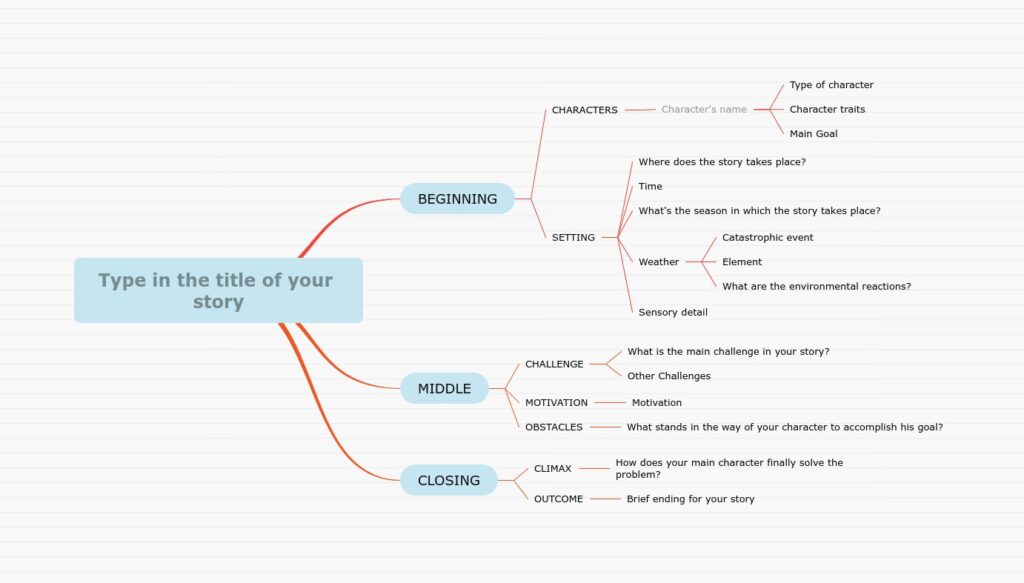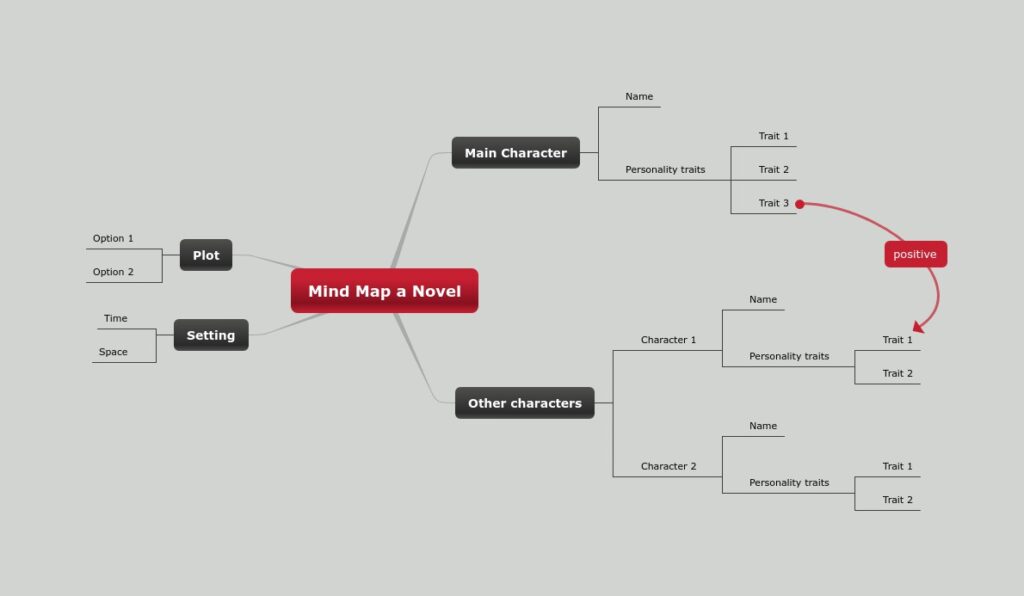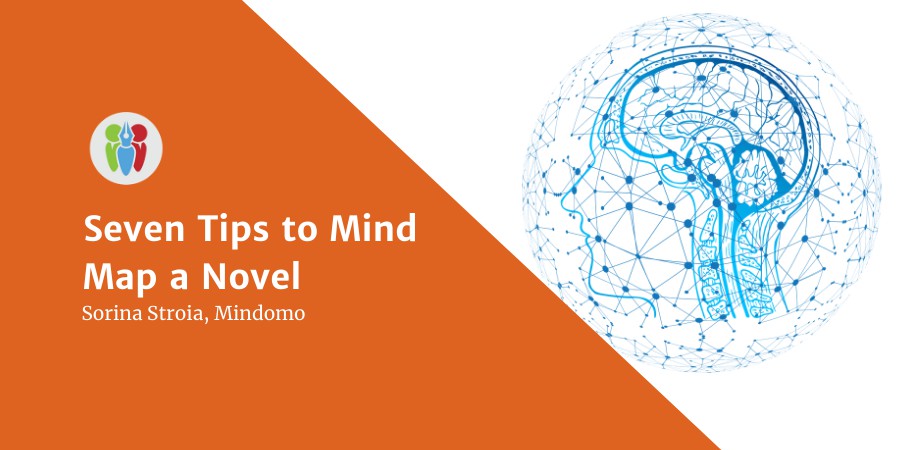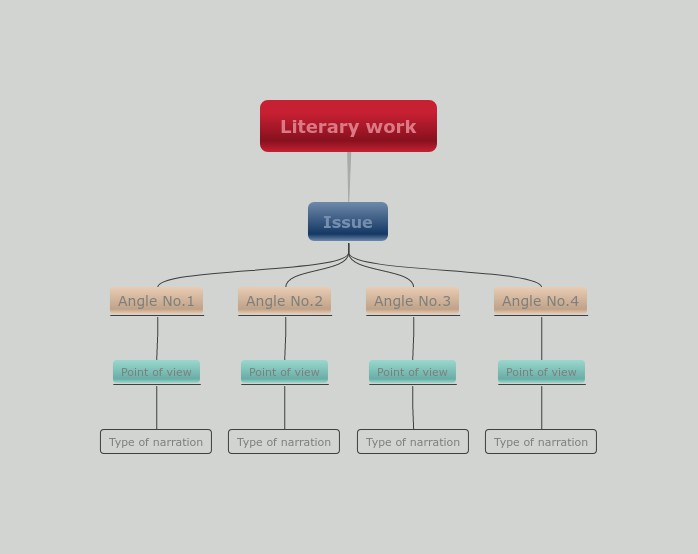One of the fascinating parts of being a creative is that we all have different processes. Outlining and planning novels are no different. But when the conventional outline seems outdated, what's the best choice for planning and writing your novel? Sorina Storia, on behalf of partner member Mindomo, thinks the best alternative is to create a mind map. Sorina and Mindomo will show you the essential steps of how to mind map a novel and plan a great approach that works for you.
How to Mind Map a Novel

Partner member, Mindomo
What is mind mapping all about and how can it help you with plotting your novel?
Mind mapping is a great technique that supports the organizing and structuring of daily activities, as well as the thoughts and ideas that continuously cross our minds.
A mind map is a graphic representation of ideas and concepts. It is a visual tool that helps you arrange all your knowledge and supports you to understand, synthesize, store and develop new ideas. Considering that 90% of the information transmitted to the brain is visual, we can say out loud that the value of mind mapping lies in its practicality.
Writing a novel is a creative process that involves finding that great idea and allowing your imagination to wander around. Once you've designed your plot and created your characters, it becomes difficult to control the object of the novel. Whether relevant to the plot or not, no one wants to forget anything that could later become important to their story.

The Seven Tips to Mind Map a Novel
1. Start with an idea and branch it out
Conventionally, every mind map starts with a central topic which is the main idea of the novel. Write it down, in the middle of the map, then free up your mind and let your thoughts spread. Think of the mind map like a blank canvas waiting to be painted by your ideas. Note any idea that comes to mind, you never know when you’re going to use it. From the central topic, begin to add sub-topics and branch out your thoughts. You might have a sub-topic for your plot with multiple variants – add and name them all, for example, ‘Plot #1’, ‘Plot#2’ and so on. Another subtopic would be for characters, then a sub-topic for each character, and develop it further with a new sub-topic to illustrate the personality and features of each character.

2. Extra notes? Yes, please
Many people suggest writing just a few words per topic, while others may write entire descriptions. However, a standard topic in a mind map should contain a minimum amount of words, solely ideas that you would like to develop later on. In case you want to detail a specific area, use the notes option, where you can list all other viewpoints that may come to mind.
3. Customize
Keep your mind map interesting and stimulating and use different features to personalize it: use colors for certain topics to highlight an idea, change the theme of the mind map, modify the shapes of the topics or synchronize colors with actions or characters. For example, use darker shades for negative characters and lighter colors for the positive ones. Apply anything that boosts your imagination and helps your flow of thoughts.
4. Bring on the resources
Any resources that you might consider helpful in your creative process can be added as links with images, videos or documents in our specific software. Maybe you liked the cover of a book or the graphics in a magazine, add anything you find inspirational and later on decide if you want to use it for your novel.
5. Record your voice notes
You can also include audio notes, which are a flexible and time-saving function with many uses. If an idea just popped into your head, you can easily access the microphone and record your voice notes. The audio recording will be saved next to the topic and you can play it back whenever you need a refresh.
6. Connect the topics
“Everything is connected with everything else”, in the words of Da Vinci. Well, so are the topics in a mind map. If you want to link a concept to another, you can insert relationships between topics and label them accordingly. For example, two different characters in the novel may have similar traits – join them with a relationship arrow, so you remember later and develop their nature.
7. Change perspective
As stated above, mind maps are a graphical view of your flow of ideas. However, in case you’d rather go for the linear representation and break down your map into a bulleted list, you can always switch between views and turn your mind map into an outline that you can edit just as well. All attachments you added previously will be kept, and the change is reversible, so you can choose to go back to the mind map view anytime you wish.
The power of mind mapping can't be underestimated, as it is a valuable tool and an excellent way to sort your thoughts and ideas. Mind mapping gives you the freedom to brainstorm and express your mind, without any constraints. It enables you to be imaginative and encourages your creativity to roam so you can make an idea tangible. It brings clarity to your thoughts so you can put your ideas together, order them and come up with a great narrative.
How to Map a Novel @mindomo #indieauthor #selfpublishing #IARTG #ASMRG #writingcommunity Share on XOVER TO YOU
How do you plan or map your novels?






I kind of had this whole concept you explained. But after reading your article, it gives me a lot of clarity. Thanks.
Haha, I just realized: I imagine you’d recommend Mindoro!! Silly me:>))
Sorina, this was super helpful as I’m in the process of plotting my second book! I’m curious if you have any suggestions of software (I write in Scrivener) that can be used for Mindmapping? Thank you in advance:>)